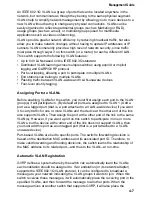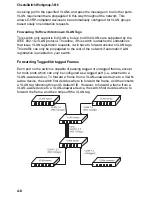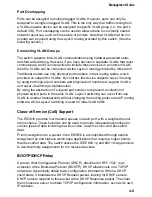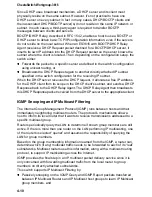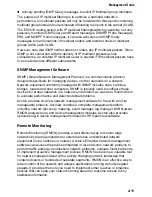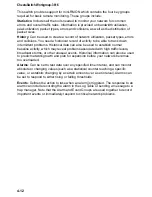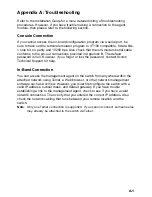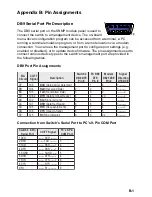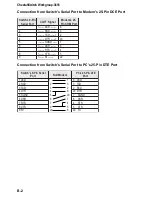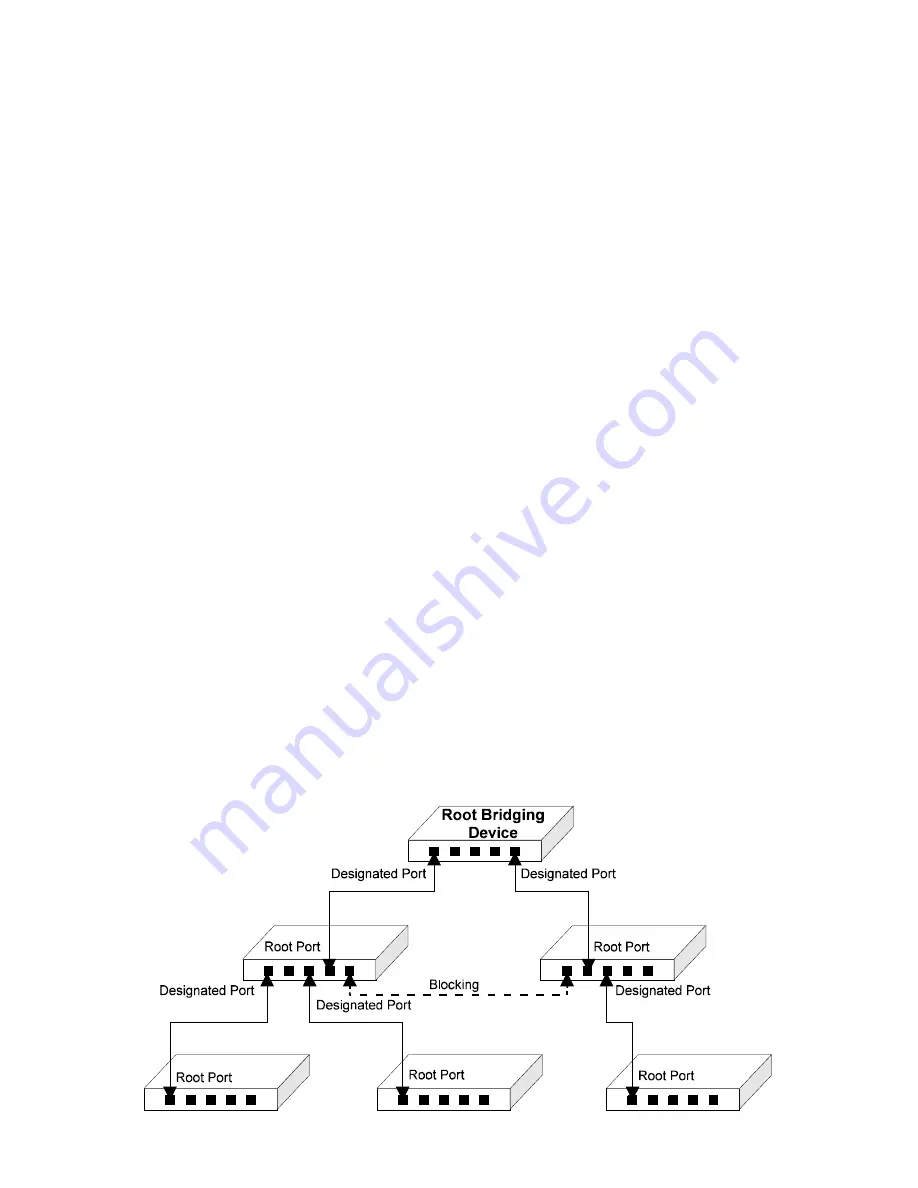
Management Guide
4-3
Spanning Tree Protocol
The Spanning Tree Protocol (that is, the STP configuration algorithm as outlined in
IEEE 802.1D) can be used to detect and disable network loops, and to provide link
backup. This allows the switch to interact with other bridging devices (including
STP-compliant switches, bridges or routers) in your network to ensure that only
one route exists between any two stations on the network. If redundant paths or
loops are detected, one or more ports are put into a blocking state (stopped from
forwarding packets) to eliminate the extra paths. Moreover, if one or more of the
paths in a stable spanning tree topology fail, this algorithm will automatically
change ports from blocking state to forwarding state to reestablish contact with all
network stations.
The STP uses a distributed algorithm to select a bridging device (STP-compliant
switch, bridge or router) that serves as the root of the spanning tree network. It
selects a root port on each bridging device (except for the root device) which
incurs the lowest path cost when forwarding a packet from that device to the root
device. Then it selects a designated bridging device from each LAN which incurs
the lowest path cost when forwarding a packet from that LAN to the root device. All
ports connected to designated bridging devices are assigned as designated ports.
After determining the lowest cost spanning tree, it enables all root ports and
designated ports, and disables all other ports. Network packets are therefore only
forwarded between root ports and designated ports, eliminating any possible
network loops.
Once a stable network topology has been established, all bridges listen for Hello
BPDUs (Bridge Protocol Data Units) transmitted from the Root Bridge. If a bridge
does not get a Hello BPDU after a predefined interval (Maximum Age), the bridge
assumes that the link to the Root Bridge is down. This bridge will then initiate
negotiations with other bridges to reconfigure the network to reestablish a valid
network topology.
The following figure gives an illustration of how the Spanning Tree Protocol
assigns bridging device ports.
Summary of Contents for ES3616
Page 1: ...CheetahSwitch Workgroup 3616 Management Guide ...
Page 4: ......
Page 10: ...1 4 CheetahSwitch Workgroup 3616 ...
Page 56: ...3 4 CheetahSwitch Workgroup 3616 ...
Page 70: ...A 2 CheetahSwitch Workgroup 3616 ...
Page 73: ...ES3616 E0998 R01 150100 102 ...



















